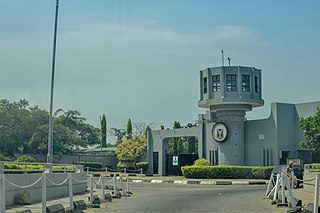Related Research Articles

Dartmouth College is a private Ivy League research university in Hanover, New Hampshire. Established in 1769 by Eleazar Wheelock, Dartmouth is one of the nine colonial colleges chartered before the American Revolution. Emerging into national prominence at the turn of the 20th century, Dartmouth was considered to be the most prestigious undergraduate college in the United States in the early 1900s.

An insulin pump is a medical device used for the administration of insulin in the treatment of diabetes mellitus, also known as continuous subcutaneous insulin therapy. The device configuration may vary depending on design. A traditional pump includes:

A wearable computer, also known as a body-borne computer, is a computing device worn on the body. The definition of 'wearable computer' may be narrow or broad, extending to smartphones or even ordinary wristwatches.

Augmented reality (AR) is an interactive experience that combines the real world and computer-generated content. The content can span multiple sensory modalities, including visual, auditory, haptic, somatosensory and olfactory. AR can be defined as a system that incorporates three basic features: a combination of real and virtual worlds, real-time interaction, and accurate 3D registration of virtual and real objects. The overlaid sensory information can be constructive, or destructive. This experience is seamlessly interwoven with the physical world such that it is perceived as an immersive aspect of the real environment. In this way, augmented reality alters one's ongoing perception of a real-world environment, whereas virtual reality completely replaces the user's real-world environment with a simulated one.

A glucose meter, also referred to as a "glucometer", is a medical device for determining the approximate concentration of glucose in the blood. It can also be a strip of glucose paper dipped into a substance and measured to the glucose chart. It is a key element of glucose testing, including home blood glucose monitoring (HBGM) performed by people with diabetes mellitus or hypoglycemia. A small drop of blood, obtained from slightly piercing a fingertip with a lancet, is placed on a disposable test strip that the meter reads and uses to calculate the blood glucose level. The meter then displays the level in units of mg/dL or mmol/L.

The University of Ibadan (UI) is a public research university in Ibadan, Nigeria. The university was once a college of the University of London. The college was established in 1948 as University College Ibadan, one of many colleges within the University of London. It became an independent university in 1962 and is the oldest degree-awarding institution in Nigeria. Through its graduate network, the University of Ibadan has contributed to the political, industrial, economic and cultural development of Nigeria. The history and influence of the University of Ibadan have made it one of the most prestigious universities in Africa.

Nnamdi Azikiwe University, Awka, also called UNIZIK or NAU in short is a federal university in Nigeria. It consists of two campuses in Anambra State. Its main campus is in Awka, while its other campus is in Nnewi. There are also other campuses of Nnamdi Azikiwe University, Awka. These include Agulu in Aniocha local government area and Ifite-Ogwuari in Ayamelum local government area in Anambra State. This makes Nnamdi Azikiwe University to operate in the three Senatorial Districts in Anambra State, Nigeria having Awka campus, in Anambra Central Senatorial District, Nnewi in Anambra North Senatorial District and Ifite-Ogwuari in Anambra North Senatorial District, respectively.
Automated insulin delivery systems are automated systems designed to assist people with insulin-requiring diabetes, by automatically adjusting insulin delivery in response to blood glucose levels. Currently available systems can only deliver a single hormone—insulin. Other systems currently in development aim to improve on current systems by adding one or more additional hormones that can be delivered as needed, providing something closer to the endocrine functionality of the pancreas.

Wearable technology is any technology that is designed to be used while worn. Common types of wearable technology include smartwatches and smartglasses. Wearable electronic devices are often close to or on the surface of the skin, where they detect, analyze, and transmit information such as vital signs, and/or ambient data and which allow in some cases immediate biofeedback to the wearer.
DexCom, Inc. is a company that develops, manufactures, produces, and distributes continuous glucose monitoring (CGM) systems for diabetes management. It operates internationally with headquarters in San Diego, California, and has manufacturing facilities in Mesa, Arizona and Batu Kawan, Malaysia.
Wireless health is the integration of wireless technology into traditional medicine, such as diagnosis, monitoring and treatment of illness, as well as other tools that can help individuals improve their personal health and wellbeing. Wireless health differs from mHealth in that wireless health solutions will not always be mobile and mobile health solutions will not always be wirelessly enabled. Mobile broadband connectivity is useful in reaching new patients in remote areas while improving productivity and convenience through data transmission.
Google Contact Lens was a smart contact lens project announced by Google on 16 January 2014. The project aimed to assist people with diabetes by constantly measuring the glucose levels in their tears. The project was being carried out by Verily and as of 2014 was being tested using prototypes. On November 16, 2018, Verily announced it had discontinued the project.

Verily Life Sciences LLC, also known as Verily, is Alphabet Inc.'s research organization devoted to the study of life sciences. The organization was formerly a division of Google X, until August 10, 2015, when Sergey Brin announced that the organization would become an independent subsidiary of Alphabet Inc. with restructuring completed on October 2, 2015. On December 7, 2015, Google Life Sciences was renamed Verily.
Ambulatory glucose profile (AGP) is a single-page, standardized report for interpreting a patient's daily glucose and insulin patterns. AGP provides both graphic and quantitative characterizations of daily glucose patterns. First developed by Drs. Roger Mazze and David Rodbard, with colleagues at the Albert Einstein College of Medicine in 1987, AGP was initially used for the representation of episodic self-monitored blood glucose (SMBG). The first version included a glucose median and inter-quartile ranges graphed as a 24-hour day. Dr. Mazze brought the original AGP to the International Diabetes Center (IDC) in the late 1980s. Since then, IDC has built the AGP into the internationally recognized standard for glucose pattern reporting.
Bigfoot Biomedical Inc. is a medical technology start-up headquartered in Milpitas, California, founded by a team of people with personal connections to type 1 and type 2 diabetes.

A continuous glucose monitor (CGM) is a device used for monitoring blood glucose on a continual basis instead of monitoring glucose levels periodically by drawing a drop of blood from a finger. This is known as continuous glucose monitoring. CGMs are used by people who treat their diabetes with insulin, for example people with type 1 diabetes, type 2 diabetes, or other types of diabetes, such as gestational diabetes.

A pulse watch, also known as a pulsometer or pulsograph, is an individual monitoring and measuring device with the ability to measure heart or pulse rate. Detection can occur in real time or can be saved and stored for later review. The pulse watch measures electrocardiography data while the user is performing tasks, whether it be simple daily tasks or intense physical activity. The pulse watch functions without the use of wires and multiple sensors. This makes it useful in health and medical settings where wires and sensors may be an inconvenience. Use of the device is also common in sport and exercise environments where individuals are required to measure and monitor their biometric data.
Dr. Shalini Prasad is a biological engineer, Cecil H. and Ida Green Professor of Systems Biology Science, and head of the Bioengineering Department at The University of Texas at Dallas. She was elected to the American Institute for Medical and Biological Engineering College of Fellows in February 2022 "for pioneering contributions in engineering sweat wearables for disease tracking and management for chronic diseases and prognostic monitoring in pandemics."
Melissa Ann Grunlan is an American scientist and academic. She is Professor and Holder of the Charles H. and Bettye Barclay Professorship in the Department of Biomedical Engineering at Texas A&M University. She holds courtesy appointments in the Departments of Chemistry and Materials Science & Engineering. Her research focuses on the development of polymeric biomaterials for regenerative engineering and medical devices.
Catharine Isobel Whiteside, CM, FRCPC, FCAHS is a Canadian physician and medical researcher. She is Director, Strategic Partnerships of Diabetes Action Canada and Chair of the board of the Banting Research Foundation. Whiteside is the former Dean of the Faculty of Medicine at the University of Toronto.
References
- 1 2 Adji B. Dieng (October 14, 2020). "Meet Nigerian Temiloluwa O. Prioleau, the first Black woman tenure-track faculty in Computer Science in the Ivy League". The Africa I Know. Retrieved September 5, 2022.
- ↑ "Temiloluwa O. Prioleau". Dartmouth College. 23 August 2018. Retrieved March 20, 2021.
- ↑ Harini Barath (September 2023). "Glucose Data Reveals Seasonal Patterns in Diabetes Care". Dartmouth News. Retrieved December 7, 2023.
- ↑ Andrew Shawn (September 26, 2023). "Wearable Devices Reveal Individuals Who May Require Additional Support In Diabetes Management". Verve Times. Retrieved December 7, 2023.
- ↑ Jeffrey Bendix (September 28, 2023). "New study shows seasonal effects on glucose levels for patients with Type 1 diabetes". Medical Economics. Retrieved December 7, 2023.
- ↑ Harini Barath (September 8, 2022). "Leveraging data from wearable medical devices". Dartmouth News. Retrieved September 9, 2022.
- 1 2 "Alumni Profile: Temiloluwa Prioleau". The University of Texas at Austin. February 12, 2021. Retrieved March 20, 2021.
- ↑ "Augmented Health Lab". Dartmouth College. Retrieved September 5, 2022.
- ↑ "Faculty Affiliates: Temiloluwa Prioleau, PhD". Center for Technology and Behavioral Health. Retrieved September 5, 2022.